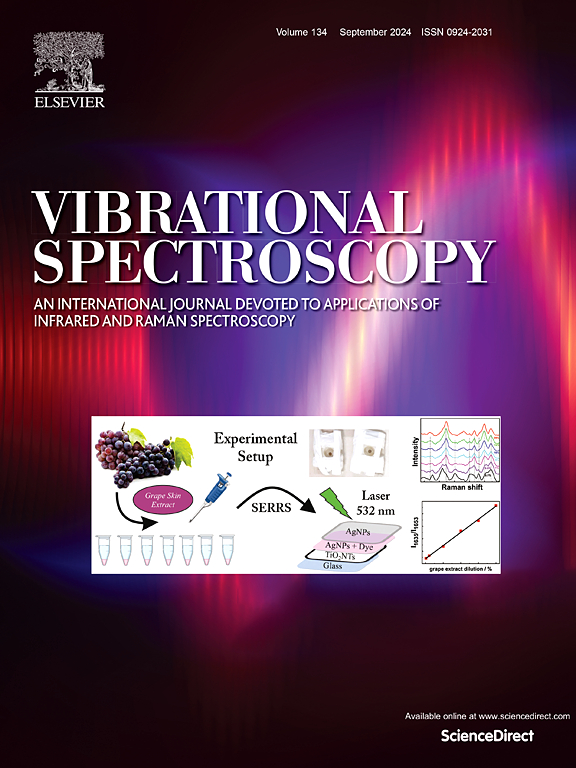基于高光谱成像的大白菜土壤体积含水量优化特征选择与机器学习
IF 3.1
3区 化学
Q2 CHEMISTRY, ANALYTICAL
引用次数: 0
摘要
土壤体积含水量(SVWC)是植物健康的关键因素,影响植物的水分吸收、养分运输和整体生理性能。干旱和高温等不利环境条件挑战作物生长并降低产量。SVWC的准确监测对于优化生长条件、防止水分胁迫和促进农业可持续发展至关重要。本研究探索了一种利用短波红外(SWIR, 894-2504 nm)高光谱成像结合机器学习的白菜幼苗SVWC无损预测方法。在灌溉停止后的三天内,每天收集高光谱图像和相应的SVWC测量数据,得到2700个光谱数据集。采用高斯过程回归(GPR)和支持向量回归(SVR)模型,特征选择采用Lasso和Ridge回归。使用所有光谱波段(E164)和30个选定波段(L30和R30)对模型进行评估。采用lasso选择波段并进行平滑预处理的GPR模型精度最高(R²= 0.87,RMSE = 1.33)。经过平滑预处理和全光谱范围的SVR模型R²= 0.82,RMSE = 1.52。使用Lasso和Ridge回归选择的14个共享频带的多元回归模型表现中等(R²= 0.67,RMSE = 2.07)。这些发现突出了高光谱成像与机器学习相结合的非破坏性SVWC预测的潜力,使作物能够早期检测水分胁迫。本文章由计算机程序翻译,如有差异,请以英文原文为准。
Optimized feature selection and machine learning for non-destructive estimation of soil volumetric water content in Chinese cabbage using hyperspectral imaging
Soil volumetric water content (SVWC) is a critical factor in plant health, influencing water uptake, nutrient transport, and overall physiological performance. Adverse environmental conditions like drought and high temperatures challenge crop growth and reduce yields. Accurate monitoring of SVWC is essential for optimizing growing conditions, preventing water stress, and promoting sustainable agriculture. This study explores a non-destructive method for predicting SVWC in Chinese cabbage seedlings using short-wave infrared (SWIR, 894–2504 nm) hyperspectral imaging coupled with machine learning. Daily hyperspectral images and corresponding SVWC measurements were collected over three days following irrigation cessation, resulting in a dataset of 2700 spectra. Gaussian process regression (GPR) and support vector regression (SVR) models were applied, with Lasso and Ridge regression used for feature selection. The models were evaluated using all spectral bands (E164) and 30 selected bands (L30 and R30). The GPR model with Lasso-selected bands and smoothing preprocessing achieved the highest accuracy (R² = 0.87, RMSE = 1.33). The SVR model with smoothing preprocessing and the entire spectral range demonstrated R² = 0.82 and RMSE = 1.52. Multivariate regression models using 14 shared bands selected by Lasso and Ridge regression yielded moderate performance (R² = 0.67, RMSE = 2.07). These findings highlight the potential of hyperspectral imaging combined with machine learning for non-destructive SVWC prediction, enabling early crop detection of water stress.
求助全文
通过发布文献求助,成功后即可免费获取论文全文。
去求助
来源期刊

Vibrational Spectroscopy
化学-分析化学
CiteScore
4.70
自引率
4.00%
发文量
103
审稿时长
52 days
期刊介绍:
Vibrational Spectroscopy provides a vehicle for the publication of original research that focuses on vibrational spectroscopy. This covers infrared, near-infrared and Raman spectroscopies and publishes papers dealing with developments in applications, theory, techniques and instrumentation.
The topics covered by the journal include:
Sampling techniques,
Vibrational spectroscopy coupled with separation techniques,
Instrumentation (Fourier transform, conventional and laser based),
Data manipulation,
Spectra-structure correlation and group frequencies.
The application areas covered include:
Analytical chemistry,
Bio-organic and bio-inorganic chemistry,
Organic chemistry,
Inorganic chemistry,
Catalysis,
Environmental science,
Industrial chemistry,
Materials science,
Physical chemistry,
Polymer science,
Process control,
Specialized problem solving.
 求助内容:
求助内容: 应助结果提醒方式:
应助结果提醒方式:


